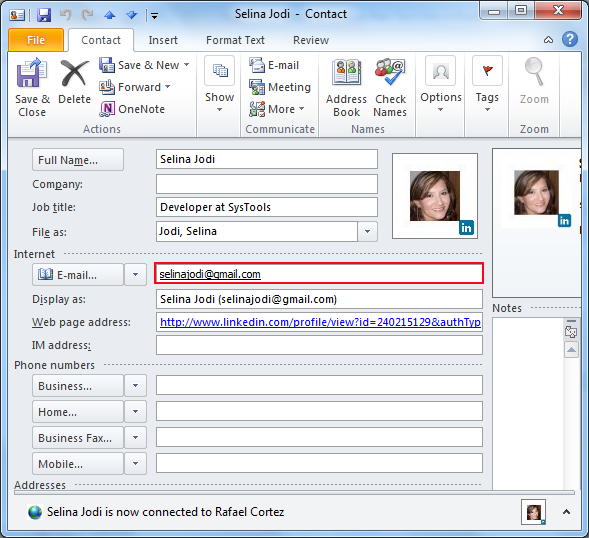

- EXCHANGESERVICE GET PLAIN TEXT FROM HTML MESSAGE HOW TO
- EXCHANGESERVICE GET PLAIN TEXT FROM HTML MESSAGE WINDOWS
URL property is used to specify the service endpoint to be used for sending email. _service.Credentials = New WebCredentials (username, password, DomainName)
EXCHANGESERVICE GET PLAIN TEXT FROM HTML MESSAGE WINDOWS
Setting UseDefaultCredentials 'to true' will use currently logged on windows credentials and if set 'to false' we need to specify the credentials using WebCredentials object.
Credentials to use to login to exchange server. EWS API supports from Exchange 2007 SP1 to Office 365 and Exchange Online. Specifying version will enable to access properties and methods available in that particular version. Providing Exchange server version with service object will indicate contract that server should use to process the request. Private ExchangeService _service = new ExchangeService(ExchangeVersion.Exchange2013) Initiate exchange service object and specify the exchange version. Net client application.ĮxchangeService class in EWS is used to configure credentials, exchange URL and service binding to be used for sending message. Net client application.Īs a starting point, first add reference in your. EXCHANGESERVICE GET PLAIN TEXT FROM HTML MESSAGE HOW TO
In this blog we will discuss how to send email messages through EWS managed API’s using. There are various methods provided by API’s to achieve various operations on exchange server. Using these API’s we can build client application which can send, read, and reply to email messages from the exchange server, and can do tasks like adding, updating, canceling appointments. To communicate with this web services Microsoft provides API’s called as EWS Managed APIs.
Restart the 'Microsoft Exchange Transport' windows service in the services snap-inĪfter configuring the Exchange server in this way, messages sent by users in RTF will be converted into HTML by the server.Īdditional resources from Microsoft's Website.Microsoft Exchange server provides web services which are called as EWS to provide access to Exchange server data. 
Set-RemoteDomain -Identity Default -TNEFEnabled $false
For each Remote domain, please run the following command:. To see you current settings please run the following command:. Restart the 'Microsoft Exchange Transport' windows service in the services snap-inĮxchange 2013, Exchange 2016 and Exchange Online Find section Exchange rich-text format and select Never use and hit ApplyĦ. On Exchange 2007: Format of original message sent as attachment to journal report tab Open Organization Configuration and then Hub Transport. Restart the 'Microsoft Exchange Transport' windows service in the services snap-in :max_bytes(150000):strip_icc()/ScreenShot2020-01-29at8.39.42AM-9812f5dcf975473bbe1789721ced4e04.jpg) Set the Exchange rich-text format option into Never use.ĥ. In the context menu choose Properties and go to the Advanced tab. In the left panel go to Global Settings | Internet Message Formats | Standard. Run the Exchange System Manager program. It is possible to configure Microsoft Exchange so that messages in RTF are never sent outside via Exchange Server, follow these steps: Resolution: Configure Exchange's rich text format setting In Outlook 2013 you can find this option in Options -> Mail, section Message format: If a user writes an RTF message in Outlook and sends it to an external address, Outlook will transform it to HTML by default (although the option may be disabled to prevent Outlook from converting the message format) and a disclaimer will be added to such a message. ̎-mails are sent outside the organization in the RTF format very rarely. It is not useful to non-Exchange Server recipients. The Winmail.dat file contains Exchange Server RTF information for the message, and may appear to the recipient as a binary file. When an end user sends mail to the Internet from an Exchange Windows or Outlook client, a file attachment called Winmail.dat may be automatically added to the end of the message if the recipient's client cannot receive messages in Rich Text Format (RTF). Problem: Mail attachments are turning to winmail.dat When it does this Exchange's default settings mean that attachments will be sent as winmail.dat files. The following article explains the problem in more detail and goes on to explain how to resolve this issue with a single configuration change in Microsoft Exchange Server. Optemail requires the Microsoft Exchange Server to act as a SmartHost.
Set the Exchange rich-text format option into Never use.ĥ. In the context menu choose Properties and go to the Advanced tab. In the left panel go to Global Settings | Internet Message Formats | Standard. Run the Exchange System Manager program. It is possible to configure Microsoft Exchange so that messages in RTF are never sent outside via Exchange Server, follow these steps: Resolution: Configure Exchange's rich text format setting In Outlook 2013 you can find this option in Options -> Mail, section Message format: If a user writes an RTF message in Outlook and sends it to an external address, Outlook will transform it to HTML by default (although the option may be disabled to prevent Outlook from converting the message format) and a disclaimer will be added to such a message. ̎-mails are sent outside the organization in the RTF format very rarely. It is not useful to non-Exchange Server recipients. The Winmail.dat file contains Exchange Server RTF information for the message, and may appear to the recipient as a binary file. When an end user sends mail to the Internet from an Exchange Windows or Outlook client, a file attachment called Winmail.dat may be automatically added to the end of the message if the recipient's client cannot receive messages in Rich Text Format (RTF). Problem: Mail attachments are turning to winmail.dat When it does this Exchange's default settings mean that attachments will be sent as winmail.dat files. The following article explains the problem in more detail and goes on to explain how to resolve this issue with a single configuration change in Microsoft Exchange Server. Optemail requires the Microsoft Exchange Server to act as a SmartHost.




:max_bytes(150000):strip_icc()/ScreenShot2020-01-29at8.39.42AM-9812f5dcf975473bbe1789721ced4e04.jpg)


 0 kommentar(er)
0 kommentar(er)
